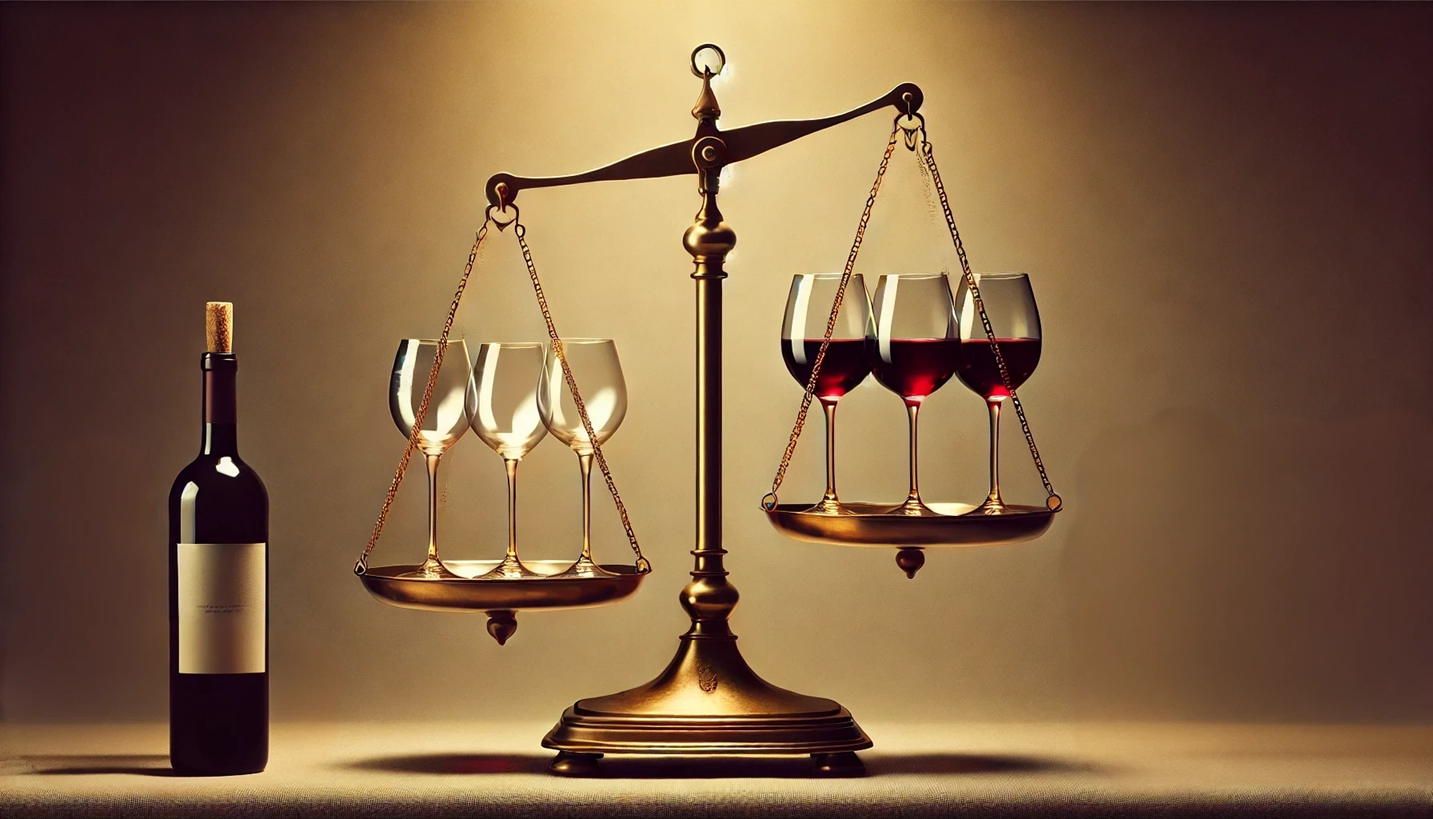“Hi, I’m Veeno Bonovinotte, and today, we’re diving into a question that every wine lover has asked at some point: How much wine is too much? Let’s break it down.”
A Personal Story: When One Glass Turns Into… a Bottle?
“You know, I’ll never forget this one evening—I had just opened a beautiful bottle of Barolo, planning to have just one glass while unwinding after a long day. I swirled it, took in the aroma, and enjoyed that first sip. It was perfection. But then, something happened…
I told myself, ‘Just one more glass.’ Then another. Before I knew it, the bottle was empty. Did I mean to drink the whole thing? Of course not. But I’d already opened it, and letting it go to waste just didn’t seem right.
And that’s when it hit me… this is exactly how most people drink more than they planned—not because they lack willpower, but because they don’t want to waste a good thing.”
Recommended Wine Consumption Limits by Region
📍 United States (CDC & Dietary Guidelines)
- Men: Up to 2 glasses per day (10 glasses per week).
- Women: Up to 1 glass per day (5 glasses per week).
- Exceeding these limits? That’s considered excessive drinking.
📍 Europe (WHO & Local Guidelines)
- France & Italy: Up to 2 glasses per day for men, 1 for women, though cultural drinking habits vary.
- UK: The NHS recommends no more than 14 units per week, which equals about 1.5 bottles of wine spread across the week.
📍 Australia (National Health and Medical Research Council – NHMRC)
- No more than 10 standard drinks per week (roughly one and a half bottles of wine).
- No more than 4 drinks in a single session to avoid binge drinking.
📍 Asia (Varies Widely by Country)
- Japan: Up to 1 glass per day for men, less for women.
- China: No universal recommendation, but drinking patterns tend to be occasional and social.
- India: Some regions discourage alcohol altogether, while others follow similar limits to the UK and U.S.
📍 Africa (WHO & Local Guidelines)
- There’s no single alcohol guideline, but the WHO suggests drinking as little as possible due to higher alcohol-related health risks.
- Many African nations recommend no more than 1 drink per day for women and 2 for men, similar to the U.S.
When Does Wine Consumption Become ‘Too Much’?
“If you’re drinking above these limits, that’s considered ‘heavy drinking’ or ‘binge drinking,’ depending on your habits. Here are some signs you might be overdoing it:
✔ You feel the need to drink daily.
✔ You often exceed the recommended amounts.
✔ You experience hangovers, headaches, or trouble sleeping.
✔ You feel guilty about how much you drink.
Now, don’t get me wrong—wine is meant to be enjoyed. But drinking beyond healthy limits can increase the risk of liver disease, high blood pressure, and certain cancers. Even if you drink within limits, frequent drinking can still affect your health over time.”
How to Drink Smart and Stay Within Limits
“So, how do you enjoy wine responsibly without going overboard? Try these simple habits:
✔ Stick to standard portions – A glass of wine is 5 ounces (150 ml), not a full goblet!
✔ Space out your drinks – Having a bottle in a single night? That’s binge drinking.
✔ Drink water between glasses – Helps with hydration and pacing.
✔ Take alcohol-free days – Give your body a break.
✔ Know your limits based on your region – Stay aware of your country’s guidelines.”
Solution:
“Here’s the truth—most people don’t overdrink because they lack self-control. They do it because they don’t want to waste a good bottle of wine.
You open a bottle, thinking you’ll have just one glass. But then you start thinking, If I don’t finish it, it’ll go bad! Sound familiar?
That’s the same logic that keeps a smoker puffing away at a cigarette after they’ve already had their fix. You paid for it—you want to get your money’s worth. The problem? That logic often leads to drinking more than you intended.
That’s why the Coravin Wine Preservation System is a must-have. It lets you pour a glass without removing the cork, keeping the rest of the bottle fresh for weeks, even months. No oxidation, no pressure to finish the bottle, and no more waking up regretting that extra glass you didn’t even want.
Think of it this way:
- 🍷 You can open a bottle without committing to finishing it.
- 🍷 You can savor multiple bottles at once, tasting different wines without waste.
- 🍷 You control your drinking instead of the bottle controlling you.
Wine is an experience, not a task to complete. Because, same as art and love, a bottle of fine wine deserves to be enjoyed, not rushed.”
Final Thought: Moderation is Key
“So, how much wine is too much? The answer depends on where you live, your health, and how often you drink. If you follow your country’s recommended guidelines, you’ll get the enjoyment of wine without the health risks.”
“If today’s episode helped you, share it with a fellow wine lover! And for more expert wine insights, visit Bonovinotte.com. See you next time—cheers!”
